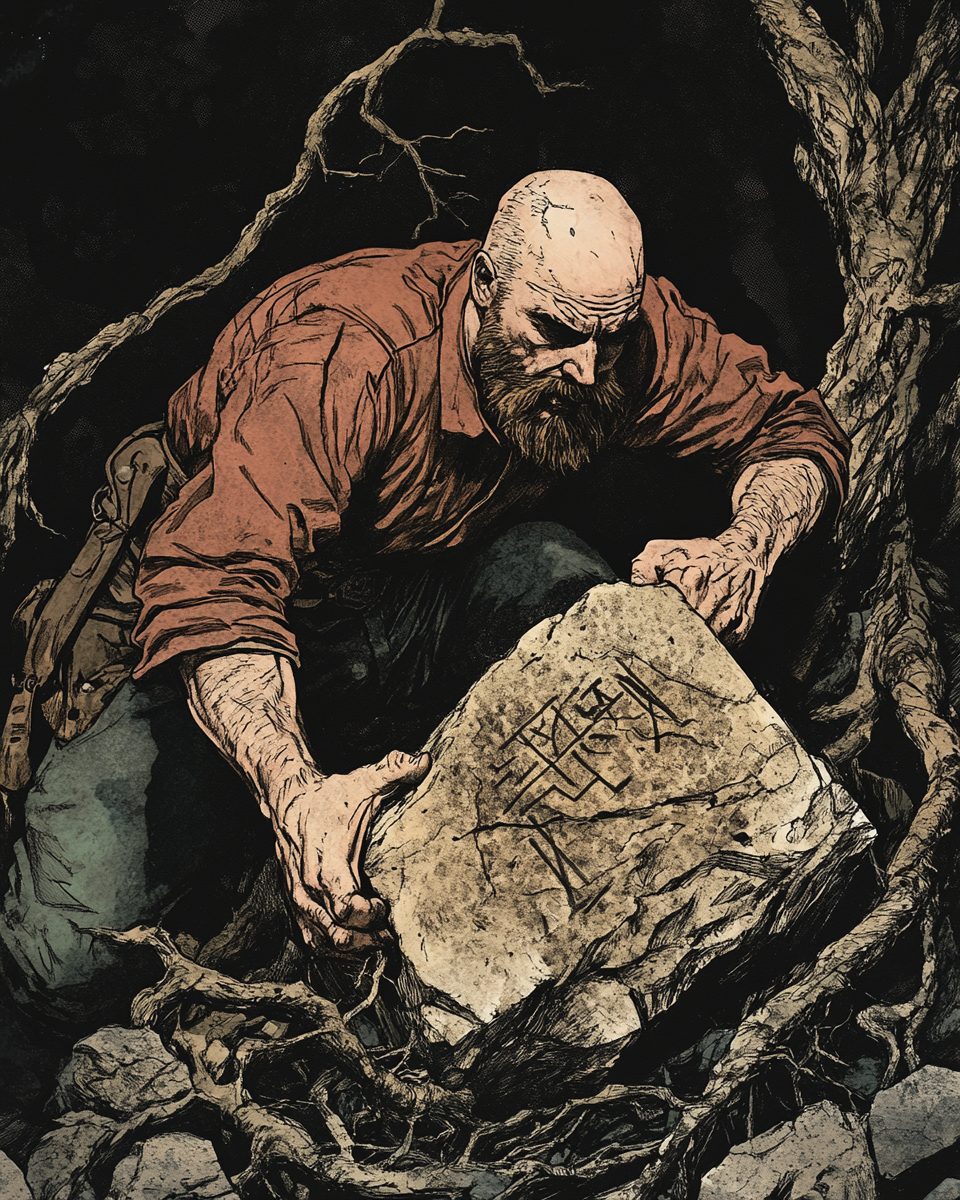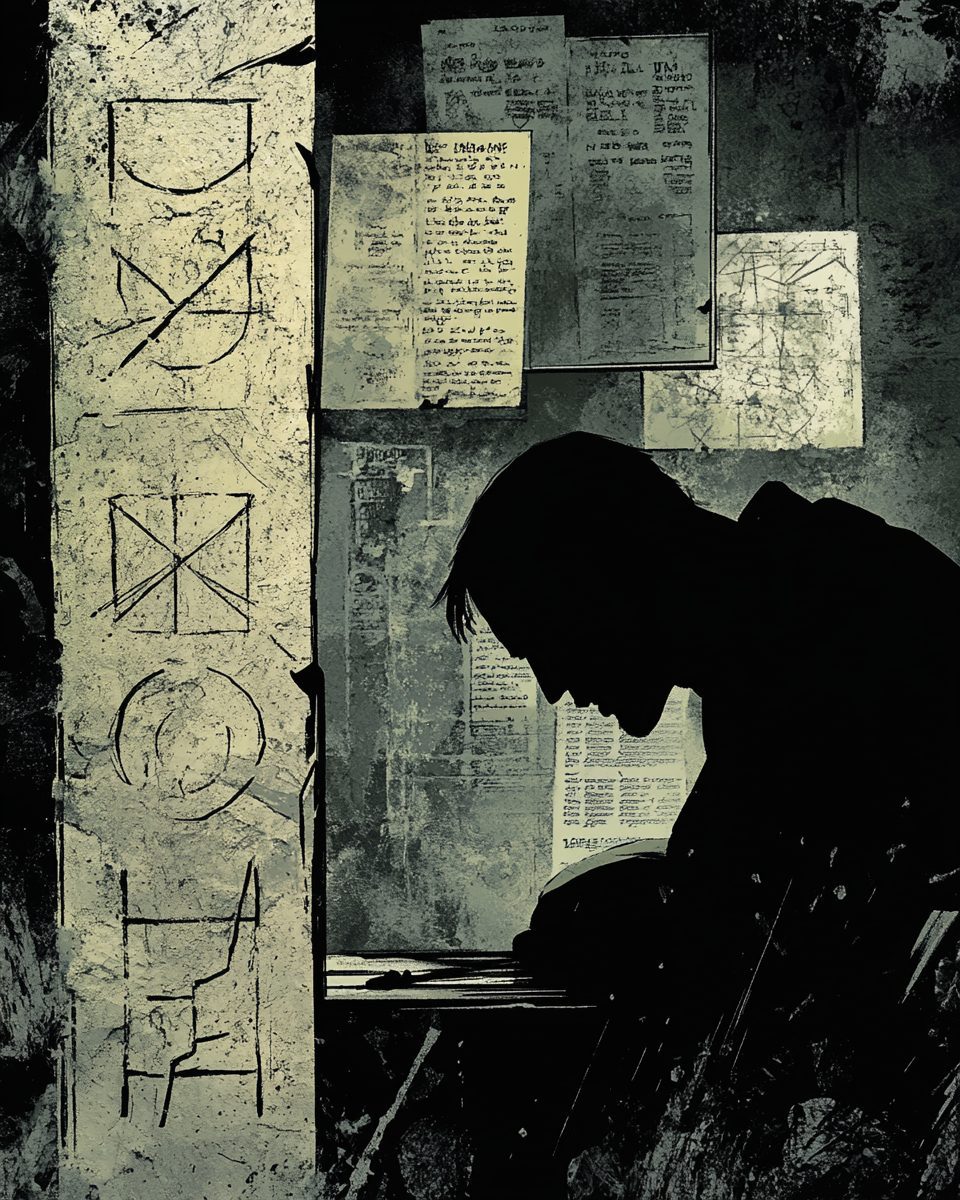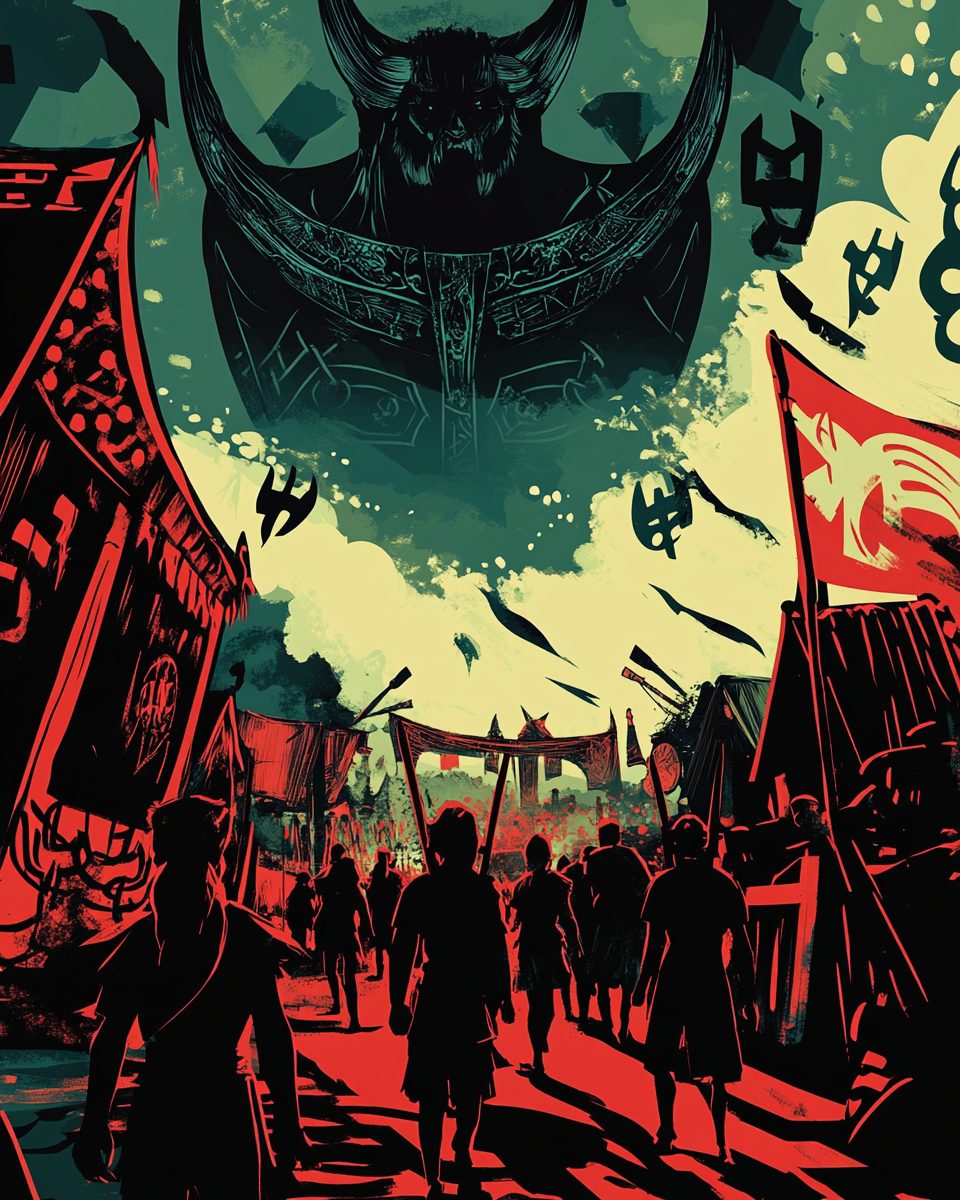The Kensington Runestone, a mysterious artifact discovered in Minnesota in 1898, has captivated historians and enthusiasts for over a century. This enigmatic stone, covered in runic inscriptions, purportedly tells the tale of Scandinavian explorers who ventured into North America long before Columbus.
The runestone’s authenticity has been hotly debated. Some hail it as evidence of an early Norse presence in Minnesota, while others dismiss it as an elaborate hoax.
Olof Ohman, a Swedish immigrant, unearthed the stone while clearing his land in Douglas County. The inscription, dated 1362, claims to document a group of Norwegians and Swedes on an exploration journey from Vinland.
It tells a harrowing story of death and survival, mentioning “10 men red with blood and dead” and a quest to “look after our ships.”
The Kensington Runestone now resides in the Runestone Museum in Alexandria, Minnesota, where it continues to intrigue visitors. Whether authentic or fraudulent, this artifact has become an enduring part of Minnesota’s cultural landscape, sparking debates about early European exploration of North America and the nature of historical evidence.
The Enigmatic Kensington Runestone
The Kensington Runestone has captivated historians and enthusiasts for over a century. This mysterious artifact, discovered in rural Minnesota, bears an inscription that has sparked intense debate about Viking exploration in North America.
Discovery by Olof Ohman
In 1898, Swedish immigrant Olof Ohman unearthed a peculiar stone while clearing his land near Kensington, Minnesota. The 200-pound slab of greywacke was found tangled in a tree’s roots.
Ohman noticed strange markings on its surface, which were later identified as runic characters.
The discovery quickly garnered attention from locals and scholars alike. Ohman’s find challenged the conventional understanding of Norse exploration in North America, suggesting Vikings had ventured far inland from the eastern coast.

Inscription Analysis
The runestone’s inscription, carved in a mix of Norse runes and Latin letters, tells a dramatic tale. It purportedly recounts a Norse expedition in 1362, describing a group of Scandinavians who traveled from Vinland and ventured inland.
The text mentions:
- A party of 8 Goths and 22 Norwegians
- A journey “far west from this stone”
- The loss of 10 men, whose blood was found on the stone
- A plea to the Virgin Mary for salvation
Linguists and historians have scrutinized every aspect of the inscription, from its vocabulary to its runic forms.
Debate on Authenticity
Since its discovery, the Kensington Runestone’s authenticity has been fiercely contested. Supporters argue that it provides evidence of pre-Columbian Norse exploration deep into North America.
Skeptics contend it’s an elaborate hoax.
Arguments for authenticity include:
- Consistency with 14th-century Norse language
- Presence of unique runic characters
Arguments against include:
- Anachronistic language usage
- Inconsistencies with known Norse runic traditions
The debate continues to this day, with the Runestone Museum in Alexandria, Minnesota housing the artifact.
Historical Context
The Kensington Runestone’s discovery in 1898 sparked debates about Norse exploration in America and Scandinavian immigration to Minnesota. Its purported 14th-century origin challenges traditional timelines of European contact with North America.
Norse Explorers in America
Norse voyages to North America are well-documented, with archaeological evidence supporting Viking settlements in Newfoundland around 1000 CE. The L’Anse aux Meadows site confirms Norse presence in the New World.
However, the Kensington Runestone’s claim of a 14th-century expedition pushes this timeline much further.
Scholars debate whether the Vikings could have reached Minnesota’s interior. The stone’s runic inscription describes a journey involving “14 day-journeys from the sea,” which would be an unprecedented feat of exploration for the time.
The year 1362: A Date on the Stone
The runestone’s inscription mentions the year 1362, a time when the Norse Greenland colonies were in decline. This date is significant because it falls between the well-known Viking Age and the later Age of Exploration.
In 1362, the Black Death had recently ravaged Europe, making long-distance voyages less likely.
The stone’s defenders argue that escaping disease could have motivated such a journey. Critics point out that 14th-century runic inscriptions typically used different linguistic features than those found on the Kensington stone.
The Role of Scandinavians in Minnesota
Minnesota saw a large influx of Scandinavian immigrants in the 19th century, providing context for the runestone’s discovery. Swedish immigrant Olof Ohman reported finding the stone in 1898, during a time of growing interest in Norse heritage.
The runestone became a point of pride for many Scandinavian-Americans, representing a connection to their ancestral homelands. It sparked local enthusiasm and tourism, with Alexandria, Minnesota, embracing its potential Viking history.
The stone’s authenticity debate intersects with issues of cultural identity and the immigrant experience in America. Whether genuine or not, the Kensington Runestone has significantly impacted Minnesota’s cultural landscape.
Cultural Relevance
The Kensington Runestone has profoundly shaped Minnesota’s cultural landscape and sparked intense debates about Scandinavian-American heritage. Its enigmatic inscription continues to captivate historians, linguists, and the public alike.
Impact on Scandinavian-American Identity
The Kensington Runestone has become a symbol of pride for many Scandinavian-Americans in Minnesota. Its purported 14th-century origin has fueled imaginations and strengthened cultural ties to ancestral homelands.
For some, the stone represents a tangible link to their Viking heritage, predating Columbus’s arrival in the Americas. This narrative has bolstered a sense of belonging and historical significance within the community.
The runestone’s story has also inspired local traditions and events, celebrating Scandinavian culture and keeping the region’s immigrant history alive. Whether authentic or not, the artifact has undeniably shaped the cultural identity of many Minnesotans with Scandinavian roots.
Runestone Museum in Alexandria
The Runestone Museum in Alexandria, Minnesota, serves as the primary custodian of the Kensington Runestone. This institution has played a crucial role in preserving and showcasing the artifact since its discovery.
The museum offers visitors a chance to examine the runestone up close and learn about its controversial history. Exhibits detail the stone’s discovery, the debates surrounding its authenticity, and its impact on local culture.
Beyond the runestone itself, the museum provides context about Scandinavian immigration to Minnesota and the region’s rich cultural heritage. It has become a focal point for both tourism and academic interest, drawing visitors from around the world.
Inscription Significance
The runestone’s inscription, purportedly dated 1362, describes a Norse expedition into the heart of North America. Its text mentions encounters with native peoples and references to established Norse practices.
Linguists and historians have scrutinized every word and rune, debating their authenticity. The mixture of Old Norse, Swedish, and English elements has fueled both skepticism and fascination.
If genuine, the inscription’s content would rewrite the history of European exploration in North America. It suggests a Norse presence in Minnesota over a century before Columbus’s voyage.
Regardless of its authenticity, the inscription has inspired countless studies, books, and documentaries. It continues to challenge our understanding of medieval Norse capabilities and the extent of their travels.
Controversies and Theories
Since its discovery, the Kensington Runestone has sparked intense debates. Scholars, historians, and enthusiasts have offered various interpretations, leading to a complex web of theories and counterarguments.
Hoax Accusations and Counterarguments
Critics argue that the Kensington Runestone is a hoax, possibly created by Olof Ohman himself. They point to inconsistencies in the runic script and language used on the stone, suggesting it doesn’t match 14th-century Scandinavian writing.
Supporters of the stone’s authenticity counter these claims by highlighting geological evidence. Some experts argue that the inscription’s weathering patterns indicate it’s much older than the late 19th century.
The debate intensified when similarities were found between the stone’s text and 19th-century Scandinavian literature, fueling suspicions of a modern origin.
Linguistic and Rune Analysis
Linguists have scrutinized the runestone’s text, noting peculiarities that don’t align with 14th-century Norse language. Some words and phrases appear anachronistic, raising doubts about the inscription’s age.
Rune experts have identified characters on the stone that seem to be a mix of medieval and more modern forms. This inconsistency has led many to question the stone’s authenticity.
However, proponents argue that the unique linguistic features could be evidence of a distinct dialect used by the supposed 14th-century explorers. They suggest that isolation and cultural mixing during the journey might have influenced their language.

Local and National Response
The Kensington Runestone has become a significant part of local culture in Alexandria, Minnesota. The Runestone Museum proudly displays the artifact, attracting tourists and history enthusiasts from around the world.
Nationally, the stone has garnered both scholarly interest and skepticism. The Minnesota Historical Society has conducted several investigations over the years, with varying conclusions.
Public opinion remains divided. Many locals embrace the stone as part of their heritage, while others view it as an intriguing historical mystery. The ongoing debate has sparked numerous books, articles, and documentaries, keeping the Kensington Runestone in the public eye.
The Runestone’s Legacy
The Kensington Runestone’s impact extends far beyond its initial discovery, leaving an indelible mark on Minnesota’s cultural landscape. Its influence has rippled through literature, education, and tourism, sparking ongoing debates and inspiring creative works.
Literature and Popular Media
The Kensington Runestone has captivated authors and filmmakers, becoming a fertile source for storytelling.
Numerous books explore its enigmatic origins, blending historical fact with speculative fiction. Notable works include The Kensington Stone: A Mystery Solved by Erik Wahlgren and The Hooked X: Key to the Secret History of North America by Scott Wolter.
Television documentaries have brought the runestone’s story to wider audiences. The History Channel’s Holy Grail in America and PBS’s The Mystery of the Runestone delve into the artifact’s controversial history. These productions often present competing theories, keeping public interest alive.
Educational and Cultural Initiatives
The runestone has become a cornerstone of educational programs in Minnesota. Local schools incorporate its study into history curricula, encouraging students to critically examine historical evidence.
The Runestone Museum in Alexandria serves as a hub for educational activities, offering guided tours and interactive exhibits.
Cultural festivals celebrate the runestone’s Scandinavian connection. Annual events like the Kensington Runestone Days feature Viking reenactments, runic writing workshops, and lectures by historians. These initiatives foster community engagement and preserve the region’s Nordic heritage.

Replicas and Tourism
The runestone’s allure has spawned a mini-industry of replicas and souvenirs. Visitors can purchase miniature versions or runic jewelry, connecting them to this piece of Minnesota lore.
Full-size replicas have been installed in various locations, including the Smithsonian Institution, spreading awareness beyond state borders.
Tourism centered on the runestone has boosted local economies. The town of Alexandria embraces its role as the runestone’s home, with themed attractions and guided tours.
Nearby towns have developed Viking-themed parks and museums, creating a network of historical sites that draw visitors year-round.

